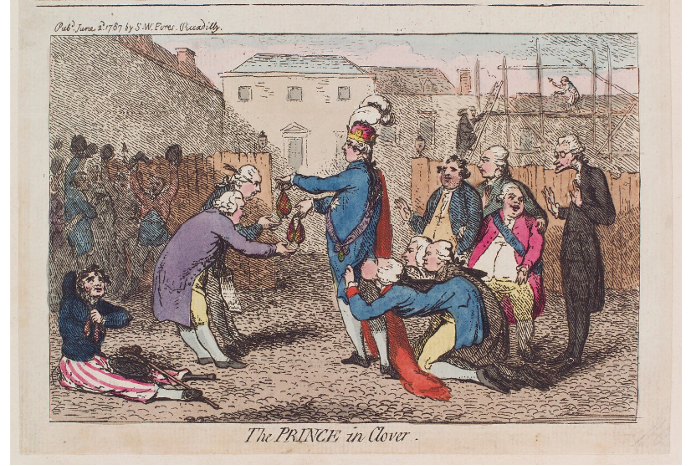Thomas Steele
1753-1823
Thomas Steele was born on 17 November 1753 to Thomas Steele and Elizabeth Madgwick in Chichester, Sussex, England. His father held the post of Recorder of Chichester. Steele received his education at Westminster School in London and at Trinity College in the University of Cambridge in 1771. The following year, Steele began studying law in London at the Middle Temple, also known as the Honorable Society of the Middle Temple. Steele, like his father, was involved in local politics, and held various political positions after becoming a member of parliament for Chichester in 1780. In 1782, he became Secretary to the master of Ordnance, and a year later, Secretary of the Treasury. He held this position until 1791 when he became Commander of the Board of Control and Jr. Paymaster General. In 1797, he was granted the additional title of King’s Remembrancer as part of the Exchequer, a sort of courts dealing with government financing dating back to the 12th century.
Steele was one of Vassa’s original subscribers. It can be inferred that Steele became aware of Vassa through his efforts in the first, disastrous Sierra Leone project initiated by Granville Sharp and Henry Smeathman. The Treasury Board, of which Steele was Secretary at the time, provided financial support for the project. When Equiano was dismissed from the Committee of the Black Poor, he wrote to the Treasury to ask for reimbursement for his expenses, which were provided. Steele’s name on Vassa’s list of subscribers, alongside others, indicated that important members of the government recognized Vassa’s role in the abolition movement.
Steele married Charlotte Amelia in September of 1785, and together they had two daughters and a son. He passed away in December 1823.
Vassa on Thomas Steele in The Interesting Narrative 9th ed.
Equiano’s note, lacking in eds. 1-8.1 He then told the agent before me, he was informed by Mr. Steele, M.P. [Thomas Steele (1753-1823), joint secretary to the Treasury Board, 1783-91, member of Parliament, and one of Equiano’s original subscribers] that the said expedition had cost 33,000L and he desired that the things might be had. [The government expended 15,679A 13 s. 4 d. on the Black Poor (PRO T 29/60, 29 July 1789).
(Carretta, Penguin ed., pg. 300, note 645)
[Equiano’s note, lacking in eds. 1-8.1 Witness Thomas- Steele, Esq. M.P. of the Treasury, and Sir Charles Middleton, Bart. &. I should publicly have exposed him, (even in writing falsely of me last March) were it not out of respect to the worthy Quakers and others.
(pg. 300, note 647)
Prepared by Renée Lefebvre, 14 June 2021
RELATED FILES AND IMAGES
REFERENCES
Namier, Lewis, and John Brooke. The History of Parliament: The House of Commons 1754-1790 (London: Martin Secker & Warburg Limited, 1964).
Carretta, Vincent. Equiano, the African: Biography of a Self-made Man (Athens: University of Georgia Press, 2005).
This webpage was last updated on 2021-12-08 by Kartikay Chadha
